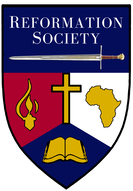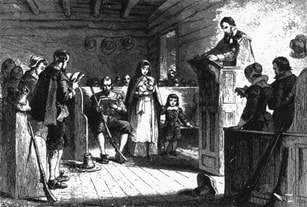 The Puritans bequeathed to us a heritage of pastoral theology unsurpassed in the history of the English-speaking church. The Puritans modelled a pattern of ministry that was both plainly Biblical and intensely devotional. The Puritans managed to balance head and heart, doctrine and devotion. Puritan theology (defined as Biblical, Evangelical and Reformed theology) served for more than three centuries as the basic doctrinal framework for Evangelicalism, throughout the Protestant world, including Baptist, Congregational, Independent, Anglican and Presbyterian traditions. The Puritans were convinced that Biblical theology and doctrinal truth were essential for healthy Christian experience and service. They insisted that the saving knowledge of God is essential for Christian living. This means that we need to know God personally and learn more about Him through His Word. What we believe affects how we live. Bad theology leads to bad practice. “It is impossible to honour God as we ought, unless we know Him as He is.” The fundamental idea of Puritanism was the supreme authority of Scripture and it expressed itself in a fervent dedication to the cause of civil freedom.  In the 17th century Puritanism became the movement which contended for the constitutional rights and liberties of the people as against the encroachments of the crown. Some of the greatest names in English history and literature were Puritans, including: Oliver Cromwell, John Milton, Richard Baxter and John Bunyan. The Puritans regarded scholarship, knowledge, art and beauty as sacred things. They tried to recognise the voice of God speaking through the forces of history, in the facts of daily life, as well as from the pages of the Bible. The Puritans saw the development of man’s richer nature as gifts of God, enriching culture and shaping life. In both the 16th and 17th centuries the leaders of the Puritans were amongst the foremost of their age in learning and intellectual force. They were for the most part university men, for culture and refinement of taste. The cause of civil liberties owes a great deal to the Puritans. Historians have identified a distinct period as the age of Puritanism in England: This was the hundred years from the coronation of Queen Elizabeth in 1558 to the death of Oliver Cromwell in 1658. While one could certainly see much amongst the Lollards of John Wycliffe in the 14th century as being pre-Puritan, the official birth of the Puritan movement in England came in 1534, under the reign of King Henry VIII, when the church in England became the Church of England. 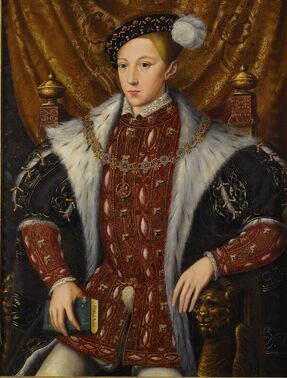 When Edward VI came to the throne in 1547, real Reformation came to the Church of England. In 1548 a service book in English (instead of Latin) was prepared. The Mass was abolished. The stone altars were removed and replaced with communion tables. The Archbishop Thomas Cranmer invited Martin Bucer to come over and assist him in the preparation of the 39 Articles and in the revision of the Prayer Book. However, with the untimely death of King Edward VI, the beheading of the Protestant Lady Jane Grey, and the accession of Queen Mary to the English throne in 1553, Catholicism was re-established as the official state religion in England. The Act of Repeal abolished all the Acts of Reformation passed by Henry VIII and Edward VI, bringing the church in England back under the Roman pontiff. The pope granted absolution to England for her supposed sin of departing from Catholicism. Supposedly this now brought England back to where it had been before the Reformation. However, England had changed and the Catholic monarch found it impossible to completely stamp out the fires of the Reformation in England. In fact the ruthlessness and cruelties of Queen Mary so outraged the general population of England that it has truly been said that, by Queen Mary having so many worthy men and women burned at the stake, “the loathing which this produced in the minds of Englishmen did more to establish the Reformation than any other single cause.”  Many of the leaders who had embraced the Protestant faith in the reigns of Henry and Edward were now forced to flee the persecution of Catholic Queen Mary. More than a thousand of these pastors and writers sought refuge amongst the Reformed churches on the continent of Europe. Amongst these Protestant exiles were 5 bishops, 5 deans, 4 archdeacons, 57 doctors of divinity and many preachers. Most of these men sought refuge amongst the Zwinglian and Calvinistic people of Switzerland and the Upper Rhine. These English exiles found sanctuary in Frankfurt, Strasburg, Basle, Zurich and Geneva. In these cities, under the influence of Bullinger and Calvin, the Puritans were attracted to what seemed to them to be the more Scriptural and spiritual forms of worship. As “Bloody Mary” the Catholic Queen died 17 November, 1558, the news spread throughout Europe and the English exiles prepared to return, despite an unusually severe winter. With the Rhine River being frozen hard, travel by boat was impossible. The roads in many places were almost impassable. Those who started from Zurich took no less than 57 days to travel back to England. There was much excitement over the accession of the Protestant Queen Elizabeth to the throne of England. At the service held on Christmas day, only a few days after her accession, she forbade the elevation of the host. On another state occasion, at the opening of Parliament, when she was met by monks with candles she unceremoniously dismissed them, “Away with those torches; we can see well enough!” 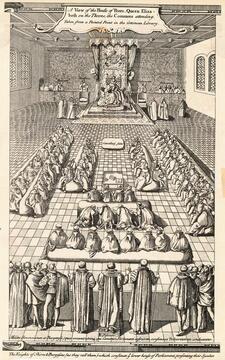 The first Parliament of Elizabeth’s reign met on 25 January 1559 and began the “Alterations of Religion”. Parliament repealed the penal laws which Mary had enacted against the Protestant Prayer Book of Edward VI, and passed the Act of Supremacy and the Act of Uniformity, two pillars on which the Church of England has rested down to this day. Henry VIII and Edward VI had each claimed to be the Supreme Head of the Church of England. Elizabeth was unwilling to be so described, maintaining that this honour belongs to Christ alone. She was therefore titled the Supreme Governor. However, one disturbing section of the Act of Supremacy authorised the Queen and her successors to appoint commissioners to exercise all kinds of jurisdictions under the crown. These commissions were not responsible to the church nor even to Parliament, but to the Privy Council. The Puritans were in agreement with the doctrine approved by the Act of Uniformity, but not as to the discipline and ceremonies. However, the Act was intended to secure uniformity in both doctrine and discipline. 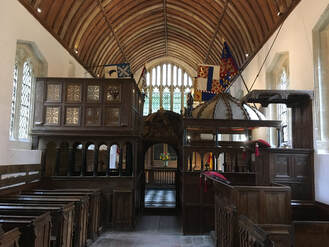 The Act of Uniformity provided for a stiff fine and imprisonment for any minister using a form of service, or another manner of celebrating the Lord’s Supper, other than that authorised by the Prayer Book. Absence from public worship without lawful or reasonable excuse brought the offender under the pain of censure, and a fine to be used for the poor of his parish. The first injunctions of Elizabeth ordered the putting away of all the religious paraphernalia associated with the Catholic forms of worship and the abolition of all ecclesiastical processions. All subjects of England were forbidden to set up or extol any images or relics, and they were to “take away, utterly extinct and destroy all shrines, coverings of shrines, all tables, candlesticks, trundles and rolls of wax, pictures, paintings and all other monuments of feigned miracles, pilgrimages, idolatry and superstition so that there remain no memory of the same.” The singing of Latin chants was also abolished, and “modest and distinct song…a hymn…so that the sentence of the hymn may be understood and perceived” was mandated for worship. Of the 9 400 clergy, only 192 refused to take the oath of allegiance, renouncing the pope and accepting the Queen as governor of the Church of England.  The commissioners carried out their instructions to have all instruments of idolatry demolished and destroyed. St Paul’s was stripped of all images and idols and the altar was replaced with the Lord’s table. All crucifixes, vestments of the priests, copes and surplices, banners and altar cloths, and other instruments of Catholicism were burned to ashes. All of this the Protestants were in agreement with. However, the Puritans maintained that, in discipline as well as in doctrine, nothing should be imposed as necessary which could not be proved from Scripture. They held that “what Christ has left indifferent man should not insist upon.” There was agreement between the Court Reformers and the Puritans in terms of doctrine, but not in terms of discipline. Bishop Hooper of Gloucester refused to wear the vestments usually worn by bishops at their consecration calling them “the livery of anti-Christ”. The Worcester Bishop, Edwin Sandys complained that “the popish vestments remain in our church.” Archbishop Parker declared: “Behold the opportunity comes for reforming the Church of England!” The Puritans brought forward a revision of Archbishop Thomas Cranmer’s Articles of 1551 as a theological guide for the clergy in their public teaching. These they reduced to 39 Articles, at which they still remain. These 39 Articles were sent to the Queen for the required authority under the Great Seal. On this doctrinal Reformation there was complete agreement.  However, the Queen was not as keen for the Reforms suggested for worship. Dr Pilkington, the Bishop of Durham, pleaded with the crown that compulsion should not be used in things of liberty. Considering how all the Protestant countries of Europe had cast away popish apparel along with the pope, why was England resolving to keep to it as a holy relic? However, the Queen instructed the Archbishop to proceed at once with the enforcement of uniformity, including the required vestments. Bishop Jewell wrote to his friend Bullinger in Zurich, 1566, requesting counsel on how they should deal with these requirements. How could Protestants adopt “the theatrical pomp of the Romish priesthood? Why should we borrow anything from popery? Why should we not agree in rite as well as in doctrine with the other Reformed churches? Why should we go back to servitude? Why cannot the bishops endure us who formerly bore the same cross with them and who now preach the same Christ? Why do they cast us into prison? Why do they persecute us on account of the habits? Why do they spoil us of our substance and means of subsistence?” The non-conforming clergy claimed that they had an equal right with the conformists to say that the Church of England was theirs. There was an increasing dislike for the vestments. Many could not forget that barely ten years previously friends and neighbours had been burned at the stake under Bloody Mary. To them these priestly vestments were stained with the blood of the martyrs. However, the Archbishop persisted in enforcing these policies by coercion. As one Puritan put it: “A sword is now put in the hands of those who under Queen Mary had drawn it for popery.”  On Tuesday 26 March, 1566, 110 ministers were summoned to appear before Archbishop Parker and the bishop of London at the Lambeth Palace. To ensure that they understood the demands being made upon them, one minister modelled how the Queen wished them to be attired when discharging their ecclesiastical functions. The narrative sounds almost comical: “My masters and ministers of London, the council’s pleasure is that strictly ye keep the unity of apparel like to this man as ye see him: that is, a square cap, a scholar’s gown, priestlike, or tipper, and in the church a linen surplice and inviolably observe the rubric of … the Queen’s Majesty’s injunctions…Ye that will presently subscribe, write Volo. Those that will not subscribe, write Nolo. Be brief: Make no words.” Thirty-seven of the assembled ministers refused to conform. As one observer wrote: “Of which number were the best preachers.” Those who refused to conform were fined, suspended and sequestered from all manner of ministry. Reporting back to the Queen, Archbishop Parker wrote: “They showed reasonable quietness and modesty, otherwise than I looked for. I think some of them will come in when they shall feel their want.” However, the Archbishop was wrong. These were resolute Puritans who had counted the cost. None of them flinched from the path before them. As one of the ministers wrote: “We are killed in our souls, for that we cannot perform in the singleness of our hearts this our ministry…we have felt good to yield ourselves into the hands of men. To suffer whatsoever God has appointed us to suffer for the preferring of the commandment of God and a clear conscience before the commandments of men…trusting God only, we seek to serve Him with a clear conscience as long as we shall live…”  The separation at Lambeth Palace between the consenting and the non-consenting clergy had far-reaching consequences. Some of the clergy expelled from the ministry took themselves to the study and practice of medicine, others became chaplains in the families of Puritan nobility, some went north and joined the Presbyterian Church of Scotland, while others emigrated. Several of their families were reduced to severe poverty. Five chose to defy the edict and continue to preach in their churches. Each was imprisoned. Several churches were also closed. At one church, on Palm Sunday, 600 persons arrived to receive communion – only to find the doors shut against them. The deposed ministers issued a joint statement pointing out that neither the prophets of the Old Testament nor the apostles were distinguished by their garments; that the linen vestment was the mark of the priesthood of Aaron which had been superseded by Christ and His Church. “We are distinguished from the laity not by our clothes but by our doctrines, not by our habits but by our conversation.” The vestments had lead to idolatry, they claimed, and was an offence, an infringement of their liberty wherewith Christ has made us free. After waiting in vain for about 8 weeks for a response from the Queen and the Archbishop, a number of the Puritan clergy met in solemn conference and serious debate as to the lawfulness and necessity of separation from the established church. Soon there were gatherings for worship in the forests and in homes, without the habits and ceremonies of the church. By 19 June 1567 a congregation of a hundred people meeting in Plumbers Hall, was broken up by the sheriff and many were arrested. Several of these appeared before Bishop Grindal of London. 24 men and 7 women were then committed to Bridewell Prison for 1 year.  Thomas Cartwright, described by Theodora Beza as “the most learned man” that he knew, being fluent in Latin, Hebrew, an eloquent preacher and rising theological scholar at the University of Cambridge, began a series of lectures on the Book of Acts. In these lectures he assailed the hierarchical constitution of the Church. He maintain that nothing should be established in the church but what was enjoined in Scripture. Therefore the names and functions of archbishop and archdeacon should be abolished, the lawful ministers of the church, bishops and deacons should be reduced to the Apostolic institution – the bishops were to preach the Word of God and pray, while the deacons were to care for the poor. Cartwright further maintained that every church ought to be governed by its own minister and elders, not by the bishop’s chancellor or the official of the archdeacon; that bishops should not be created by any civil authority, but be freely chosen by the church. He also contended that no man ought to be admitted to the ministry unless he was qualified to preach. For these views Cartwright was deprived of his professorship, and expelled from the University. In 1573 he went abroad and became the minister of the congregation of English merchants at Antwerp. Another 100 ministers were evicted from their parishes. A Puritan Member of Parliament, Peter Wentworth, who protested against these infringements of religious liberty by the crown, was imprisoned in the Tower of London. There were numerous attempts by Parliament to reform church government and abolish the office of archbishop, chancellors, archdeacons and commissioners, replacing the government of the church with ministers, elders and deacons. As one Puritan wrote: “The right government of the Church cannot be separated from the doctrine of the Church.”  “Take away the lordship, the loitering, the pomp, the idleness, and livings of bishops, but yet employ them to such ends as they were in the old Church appointed for.” “To abolish unprofitable ceremonies…to put a stop to lewd customs…” The effect of these admonitions addressed to Parliament was to excite the Queen’s anger and cause her to reprimand the bishops for not suppressing the men who expressed these views. In Northampton the Puritans started voluntary associations to meet together every Tuesday and Thursday for a lecture in the chief church of the town. Each Sunday evening the youth of the town were instructed and examined in a portion of Calvin’s Catechism. These voluntary associations also included “prophesying”, meaning preaching from Scripture and applying the text to instruct the people in Christian knowledge. These exercises also spread to the Diocese of Norwich. However, when the Queen heard of them she gave instructions to the Archbishop to have them stopped. After investigating, the Archbishop reported back to the Queen: “Both speakers and hearers do profit much in our knowledge in the Word of God…so long as the truth is godly and reverently uttered in this prophesying…no seditious, heretical or schismatical doctrine can be proved to be taught…” Nevertheless, the Queen’s order was re-emphasised that these prophesyings must be suppressed. And so they were. In 1586 the Puritans made a survey and found that out of 10 000 parish churches in England, only 2000 had preachers. The spiritual destitution of England was severe.  The new Archbishop Grindal came into conflict with the Queen immediately upon his appointment. Archbishop Grindal undertook a survey of the Northern province of England and was appalled at the ignorance and superstition prevailing there. He pleaded with the Queen to allow the preaching of God’s Word even by the non-conformists. His meeting with the Queen was described as “passionate and stormful”. As she would not listen to what he had to say in his own defence, he placed his concerns in writing: It was only his duty to God which made him refuse to suppress the preachers and their exercises. For public preaching of God’s Word is the ordinary means and instrument of Salvation. It is by the preaching of God’s Word that the glory of God is enlarged, faith is nourished and charity increased. He had been careful only to admit competent men to the office. As to the prophesyings, he had consulted other bishops who were also convinced that they were profitable to the Church and therefore expedient to be continued “I am forced with all humility and yet plainly to profess that I cannot with safe conscience, and without the offence of the majesty of God, give my assent to the suppressing of the said exercises…he who acts against his conscience builds for hell. And what should I win, if I gained (I would not say a bishopric, but) the whole world, and thus lose my own soul?” From this point on the Archbishop was treated as if he was a dead man. He was confined to his own house, summoned before the Star Chamber and lectured and humiliated for his disobedience. He remained under the Queen’s displeasure for the rest of his days, secluded and bypassed by the crown in the administration of the church.  The earlier bishops of Queen Elizabeth’s reign, Grindal, Parkhurst, Jewell, Pilkington, Sandys, Horn and Cox were not unsympathetic to Puritan ideals and had the Queen permitted they would have made more concessions to them. For each of them had been exiles among the Reformed churches of Switzerland and the upper Rhine. However, the advent of Whitgift to Canterbury, Aylmer to London and Freke to Norwich presented the Queen with men willing to do whatever was required of them. Archbishop Whitgift was in full sympathy with the Queen in her dislike of Puritan ideas and shared her love of pomp and ceremony. Upon his appointment Whitgift was charged by the Queen to restore the discipline and the Uniformity of the church and crush “the obstinacy” of the Puritans. The first to resist the Archbishop’s new rules were 20 ministers in Kent. They were willing to subscribe to the Prayer Book, but they had objections to the enforcing of saints’ days and the public reading of the Apocrypha. They also objected to the attire of ministers being enforced, and the creation of a superior clergy. They noted that bishops, pastors and elders were of equal rank in the New Testament. These ministers were pronounced “contumacious” and charged. In Norfolk 60 former parish ministers were suspended. In Suffolk 60 ministers were suspended. The prisons were filled with ministers charged with ecclesiastical offences. Many were incarcerated for months without either warrant or trial, treated as common criminals and, on occasion, beaten. Some of them died in prison. One Puritan clergyman wrote to the Archbishop protesting: “I have read these articles of enquiry…I think the Inquisition of Spain used not so many questions to comprehend and entrap their prey…this kind of proceeding savours too much of the Roman Inquisition…”  Because of the abuse of the Episcopacy many Puritans began advocating a Presbyterian form of government, substituting pastors and ruling elders for those of archbishops and bishops, chancellors and archdeacons. They proposed organising the parishes of England into a connected system of presbyteries, synods and assemblies both provincial and general. One of the questions they asked was: From where did the bishops obtain their authority? It certainly could not have been from the Scriptures for in the Bible bishop and elder were equivalent terms denoting equality of rank. Since the formal excommunication of Queen Elizabeth by the pope in 1570, from whence did the bishops of England derive their authority? Under the influence of Reformer John Knox, Scotland had recently set aside Episcopacy and established Presbyterianism as the national form of church government. Many Puritans wanted the Church of England to do the same. The Puritans advocated the interdependence of doctrine and discipline. They maintained that the danger of the Church of England was that doctrine was being severed from its discipline and thus the Reformation was incomplete and insecure in England. They maintained that the canon law was a trojan horse whereby the church was being subverted. The Puritans insisted that true and right discipline could only be based on the Word of God as its sole authority. A manifesto to this effect was published by Cambridge Press in 1584 and it received strong support from the Parliament. Petitions were presented to the House of Commons for the restoration to office of those ministers suspended, and for the training and supply of able preachers for those many parishes without a pastor. Numerous bills were passed by the Commons for which the Queen reprimanded them as encroaching upon her supremacy. When Parliament continued by introducing a bill for further Reformation, the Queen had some of the more zealous members of Parliament imprisoned in the Tower of London. The historian Hume, who was no friend of the Puritans, observed: “So absolute indeed was the authority of the crown. But the precious spark of liberty had been kindled and was preserved by the Puritans alone; and it was to this sect that the English owe the whole freedom of their constitution.”  In 1572 the Bartholomew’s Day Massacre occurred in Paris, and gave greater urgency and impetus to the Puritans in working for religious freedom in England. Some of the ministers who had been driven from the pastorate and silenced from public speech began to propagate their Reformed faith by means of the printing press. The age of pamphleteering was beginning. Tracts and treatises poured from the printing presses. The Archbishop decided that all this must come to an end. Therefore he issued a decree limiting the number of printing presses and providing full strict surveillance of licensed presses. No press was allowed to be set outside the city of London, or the universities of Cambridge and Oxford. No book was allowed to be printed until first read by the Archbishop, the bishop of London or by the censors appointed by them. The printing office of Saint Paul’s was raided in 1588. The equipment and publications were confiscated. Yet the Puritan message spread widely throughout the English parishes. Out of the 2000 preachers in the church, 500 subscribed to The Book of Discipline by 1590. Congregational church government and free churches were being openly advocated. Hundreds of free churches, separate from the national church, were organised and met in private homes. Reformation publications that could not be printed in England were printed in Holland and smuggled into the country. In 1583 John Copping and Elias Thacker were convicted of sedition for spreading these illegal books and were hanged. William Denys was also hanged for criticising the Queen’s rule over the church. One Puritan publication of this time: The True Marks of Christ’s Church identified three characteristics: 1. The glorious Word of God and the Gospel are freely and purely preached; 2. The sacraments are administered according to the Word of God and 3. Discipline is administered in accordance with the Word of God. Puritan publications repeatedly taught as their highest aim that: “the blessed Word of our God alone may rule and have the highest place”.  Many home churches were broken up and scattered, their members being sent to prison. On Sunday 8 October 1586, twenty-one people meeting in Henry Martin’s house in the parish of Saint Andrews were raided by the bishop of London’s servants as they were listening to the reading of the Scriptures. They were arrested, and eleven imprisoned. Of these eleven Alice Roe and Margaret Maynard died in Newgate Prison and Nicolas Crane, an old man of 66 years, also died in prison. One of the Puritans imprisoned and executed at Tyburn in March 1593 wrote: “You cannot have a truly Christian church unless it is composed of spiritual men. A true planted and rightly established church of Christ is a company of faithful people, separated from unbelievers, gathered in the Name of Christ whom they truly worship and readily obey. They are a brotherhood, a communion of saints…” The Puritans advocated that the Church constitutes of spiritually renewed men and women recognising the headship and authority of Christ. Many of those English Puritans who were separatists had no choice but to conform or go into exile. Many chose to emigrate to Holland. They found in the Netherlands a liberty of conscience and freedom of worship not yet fully established in England. On 5 July 1581, the knights, nobles and cities of Holland and Zealand called upon William the Silent to accept the crown on the condition that he: “maintained exercise only of the Reformed evangelical religion, without, however, permitting that enquiries should be made into any man’s belief or conscience, or that any injury or hindrance should be offered to any man on account of his religion.” In this way Holland became a refuge, offering asylum and liberty for dissidents from many other lands. It was from Holland that English Puritans set sail on the Mayflower for the Americas. Upon the death of Queen Elizabeth and the accession of King James VI of Scotland to be King James I of England, the Puritans had high hopes of their just cause being enforced by the throne. The Puritans were convinced that James would be sympathetic to the Puritan position, because he had been brought up amongst the Presbyterians of Scotland.  Therefore, James I was presented with the Millenary Petition, apparently having been signed by a thousand English clergymen, pleading for further reforms. The resultant Hampton Court Conference was disappointing. King James let them state their case and then bluntly told them that they must either conform or leave. Those failing to conform would be ipso facto excommunicate and in danger of imprisonment for life. James I required the clergy to subscribe “willingly and from the heart” and as a result more than three hundred ministers were either excommunicated, banished or forced to leave the country. The House of Commons was dominated by Puritans and they demanded freedom of conscience. It was pointed out that absolute monarchies had elsewhere risen on the ruins of national liberties throughout Europe, most notably throughout France and Spain. As one parliamentary orator declared in 1625: “We are the last monarchy in Christendom that maintains its rights.” The state, church and the king joined hands in resisting the Puritans and Parliament. James resorted again and again to unconstitutional methods of obtaining the money he needed for his wars.  Upon the death of King James in 1625, his son Charles I travelled even further and faster down the same unconstitutional road. Gentlemen were sent to prison for failure to pay exorbitant and unconstitutional taxes. Strong resentment and loud discontent surfaced throughout the nation. Parliament appointed a Committee on Religion which objected to the introduction of new ceremonies and worship, to the erection of altars in place of communion tables, the suppression of books and sermons and imprisonment of peoples for matters of conscience. The King thereupon declared the House dissolved. Before adjourning, the House of Commons passed three resolutions:
Nine members of the House of Commons were imprisoned for their part in these proceedings. Parliament was then dissolved and for 11 years England was governed by the king’s word alone. Elizabeth’s policies had created a religious opposition and the policies of King James created a political opposition. Under King Charles the political and religious opposition united. During these years Charles I relied upon his Archbishop Laud to revolutionise the religion of Scotland by bringing it from Presbyterianism to Episcopacy. People were forbidden to leave their own parish church or to even attend Episcopal services elsewhere. Altar rails were placed in churches. And altars replaced communion tables. Those refusing to obey these edicts were thrown into prison.  As a result of Archbishop Laud’s administration over 20 000 Puritans left England and resettled in the Americas. With Charles I governing England without Parliament and Archbishop Laud harassing both clergy and laity by his high-handed actions, the forces of opposition grew steadily. When Charles was finally forced to recall Parliament, November 1640, to urgently provide money for his Scottish war, the House of Commons was determined to institute Reform. An ominous petition signed by fifteen thousand citizens of London and attended by 1500 gentlemen was presented to the House of Commons. This document was known as the Root and Branch Petition. It complained about the silencing of so many faithful, diligent and gifted ministers because they could not in conscience submit to the needless devices of the bishops, and of the great increase of the idle, lewd, dissolute and ignorant ministers, the growing conformity of the Church of England to the church of Rome in vestments, postures, ceremonies and administrations, the bowing towards the altar, the setting up of images, crucifixes and chalices. They complained of the inquisitional proceedings extending even to men’s thoughts, and the imprisoning of persons on grounds of conscience. A petition for the abolition of Episcopacy with thousands of signatures was delivered to Parliament. In response to these submissions, Parliament appointed Commissions to visit the various counties to demolish and take away all images, altars, crucifixes, superstitious pictures, ornaments and relics of idolatry out of all chapels and churches. Parliament issued the Grand Remonstrance which indicted the king’s unacceptable conduct. The response of Charles I was to attempt to arrest the five members of Parliament who had played a leading role in formulating the Remonstrance. When his plans were frustrated, Charles I set up the royal standard on Nottingham Hill, 22 August 1641 and called upon all loyal subjects to come to his aid against Parliament. The previous civil war, the War of the Roses, had been fought between rival houses. But this English civil war was fought between King and Parliament.  Oliver Cromwell observed: “Religion was not the thing at first contested for, but God brought it to that issue at last, and at last it proved to be that which was most dear to us.” Many in England who favoured congregational independence were fearful of religious repression under the Scottish Presbyterian system. They observed that few in England were willing to replace the oppression by episcopacy with the “inquisitional jurisdiction” exercised by the church courts in Scotland. Even as the New Model Army, which was largely made up of independents, was winning victories on the battlefields, Presbyterians in Parliament were passing ordinances for the suppression of all religious views in disagreement with Presbyterian government and infant baptism. The Presbyterians in Parliament went so far as to draw up ordinances forbidding all who were not ordained Presbyterian ministers “to preach or expound the Scriptures in any church or chapel or in any other place!” A further notion prohibited worship in any other place aside from that “appointed for public worship”. Jeremiah Burroughs preached before the House of Lords, Westminster Abbey: “But it saddened his heart that those, who not long since were crying to heaven for deliverance, should now rise up to oppose the freedom of their brethren who together with them loved the Lord Jesus and agreed in the substance of worship and doctrine. To use force upon people before they have means to teach them is to seek to beat the nail of authority without making way by the wimple of instruction.” Oliver Cromwell’s plea for a toleration for independents and for endeavours to accommodate “tender consciences” was rejected by the Presbyterian dominated House of Commons. 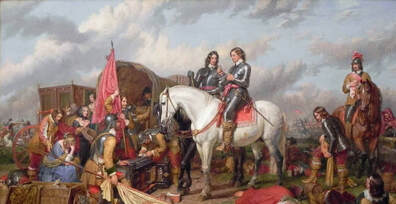 Writing to the Speaker of the House of Commons from the field, after the tremendous victory at the battle of Nasby, Oliver Cromwell wrote that his men were entitled to the fruits of victory in the shape of religious freedom: “Honest men served you faithfully in this action. So, they are trusty; I beseech you in the Name of God not to discourage them. He that ventures his life for the liberty of his country, I wish he trust God for the liberty of his conscience, and you for the liberty he fought for.” However, a petition for religious freedom was burned by the sheriffs of London. Sir Oliver Cromwell and the Council of the Army stepped in and evicted those against religious freedom from Parliament. The Bare Bones Parliament formed under Oliver Cromwell carried out many important reforms, including reforming the law, the national church, and civil marriages. With tremendous public support, Parliament legislated Sabbath observance, the closing of shops and stoppings of manufacture on the Lord’s day. Cruelty to animals was also outlawed. Under Cromwell, horse races, bear baiting, cock fights and the like were outlawed. Vagrants were expelled and houses of immorality were closed. However, while seeking to reform the morals of the nation by process of law, Cromwell really laid more stress on the influence of education and religion. He stressed the formation of future citizens by means of a system of free schools as the chief duty of a Republic. In the state church system reconstructed under Oliver Cromwell in 1654 there was no one recognised form of ecclesiastical organisation and therefore no mention was made by name either of Episcopacy, Presbyterianism or independency. There were no church courts, no church assemblies, no church laws or ordinances. Nothing was said about rites and ceremonies, nothing even about sacraments. Modes of administering the Lord’s Supper and baptism were left for each congregation to decide for itself. It was further provided that if there were churches that preferred to worship outside of the national system altogether, they were at liberty to do so. The articles of government declared that such persons “shall not be restrained, but shall be protected in the profession of the faith and exercise of their religion, so long as they abuse not their liberty to the civil injury of others, and to the actual disturbances to the public peace on their part.” 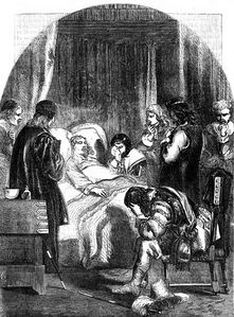 In his national church settlement, Oliver Cromwell seems to have honestly aimed at bringing about a real union of tolerance and comprehension. Unfortunately, the rule of the Puritans fell with the death of Oliver Cromwell. The Presbyterian party negotiated with King Charles II to restore the monarchy – with the understanding that Charles would enforce Presbyterianism as the national church. This solemn undertaking Charles II reneged upon when he was crowned. However the Puritan ideas achieved in America what had been betrayed in England. And in America the hard-learned lessons of the Puritans were implemented with checks and balances, separation of powers, constitutionally limited government and religious liberty. Puritanism stands for the supremacy of the will of Heaven against the passions and clamours of earth. Puritanism made the rulers of Europe to not only respect England, but to fear her. Absolute monarchies had everywhere else risen on the ruins of national liberties. The Puritans arrested the growth of absolute government in England. And Puritan ideas did not fall with the institutions in which they had been embodied. They achieved a great and permanent work in the cause of civil liberties. While the Stuart kings came back for a time, the Star Chamber and court, High Commissions, forced loans and unconstitutional laws of government did not come back with them. The Puritans had won the battle for constitutional liberty. 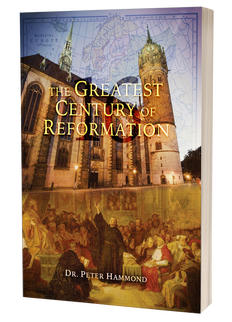 Peter Hammond The Reformation Society P O Box 74 Newlands 7725 Cape Town South Africa Tel: 001-408-370-1653 Email: [email protected] Fax: 866-796-0651 Website: www.ReformationSA.org Email:[email protected] Website:www.frontlinefellowship.net
0 Comments
Leave a Reply. |
History ArticlesCategories
All
Archives
May 2023
|
- Home
-
History Articles
- History Articles
- All Categories
- Character Studies
- Greatest Century of Missions
- Greatest Century of Reformation
- Reformation In Bohemia
- Reformation In England
- Reformation In France
- Reformation In Geneva
- Reformation In Germany
- Reformation In Italy
- Reformation In Scotland
- Reformation in Switzerland
- Victorious Christians
- Contemporary Articles
- Resources
- Contact
- Donate
|
The Reformation Society
PO Box 74, Newlands, 7725, South Africa Tel : (021) 689-4480 Email: [email protected] Copyright © 2022 ReformationSA.org. All rights reserved |
- Home
-
History Articles
- History Articles
- All Categories
- Character Studies
- Greatest Century of Missions
- Greatest Century of Reformation
- Reformation In Bohemia
- Reformation In England
- Reformation In France
- Reformation In Geneva
- Reformation In Germany
- Reformation In Italy
- Reformation In Scotland
- Reformation in Switzerland
- Victorious Christians
- Contemporary Articles
- Resources
- Contact
- Donate


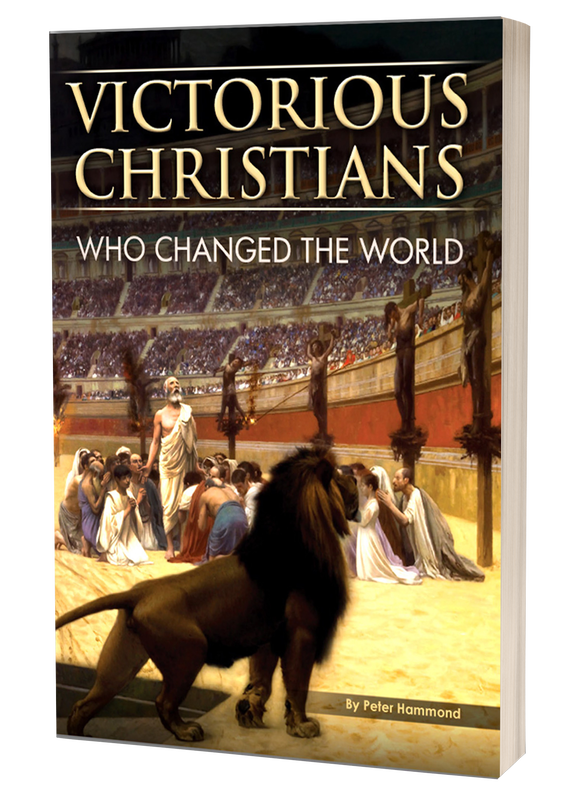
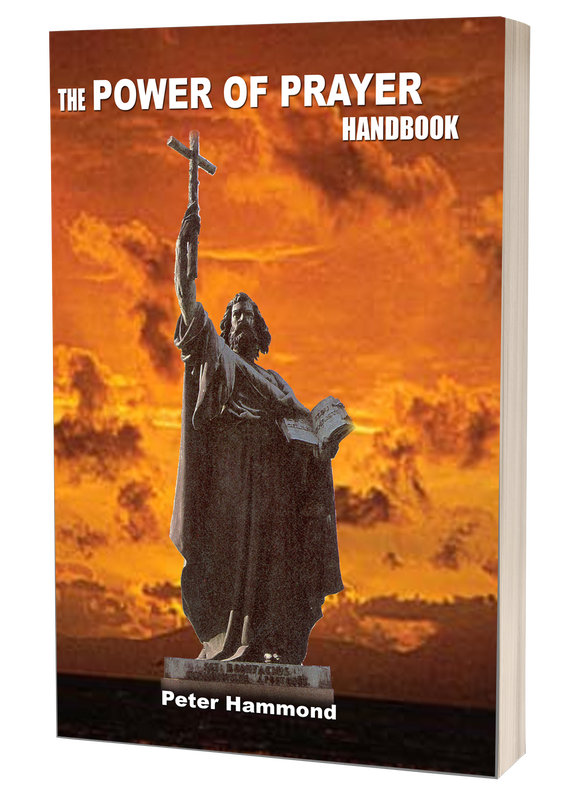
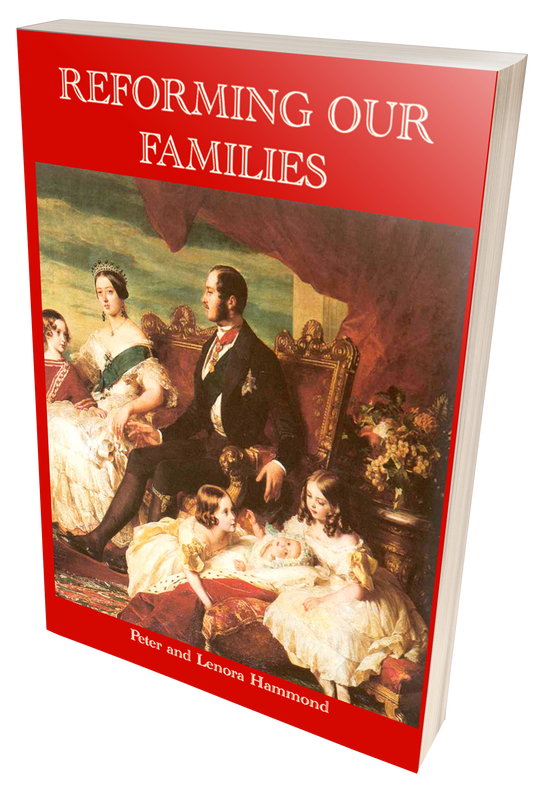
 RSS Feed
RSS Feed
